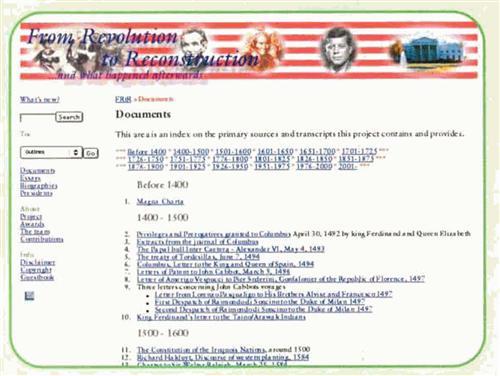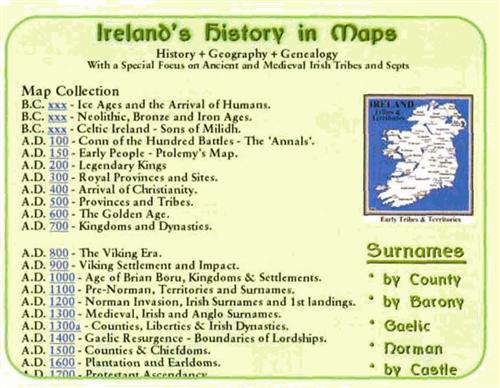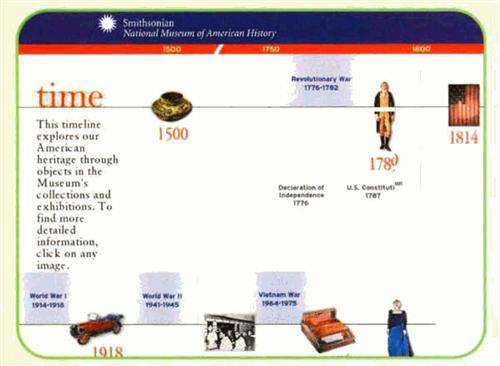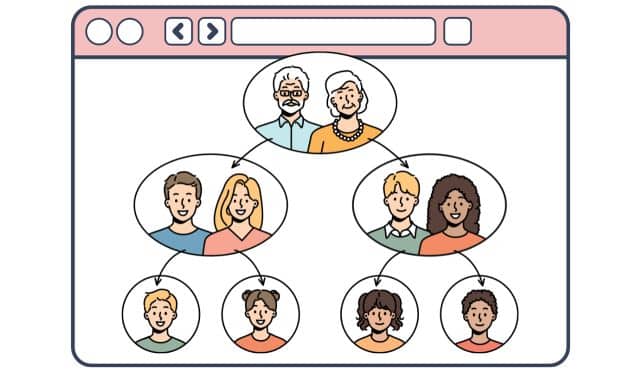Sign up for the Family Tree Newsletter! Plus, you’ll receive our 10 Essential Genealogy Research Forms PDF as a special thank you.
Get Your Free Genealogy Forms
"*" indicates required fields
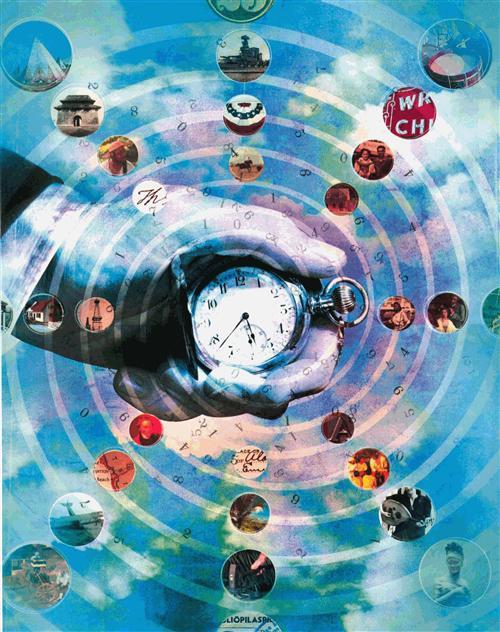 Sooner or later, every genealogist hits a brick wall in her research. You seem to be on the right track and then poof! — Great-grandpa Joe’s paper trail disappears. Sometimes the key to breaking through that wall is focusing not on your ancestor, but on the place and time he lived. Historic events such as war, mass migration, famine or epidemic often can explain an elusive ancestor’s vanishing act — and give you a sense of his trials and triumphs.
Sooner or later, every genealogist hits a brick wall in her research. You seem to be on the right track and then poof! — Great-grandpa Joe’s paper trail disappears. Sometimes the key to breaking through that wall is focusing not on your ancestor, but on the place and time he lived. Historic events such as war, mass migration, famine or epidemic often can explain an elusive ancestor’s vanishing act — and give you a sense of his trials and triumphs.
Thanks to the Web, putting your kin in historical context has never been easier. Sites maintained by history buffs, restored historic villages and educational institutions are crammed with detailed accounts (many of them firsthand narratives) of everyday life through the centuries. In seconds, you can track down a recipe for Roman honey cakes, read the nation’s reaction to the Custer massacre or find plans for a typical Colonial garden.
If you immerse yourself in an era’s history, you’ll get a feel for your ancestor’s daily routine. And that may lead you right to the chink in your brick wall. So what are you waiting for? Log on to these 37 Web sites and step into the past.
Historic towns and villages
ADVERTISEMENT
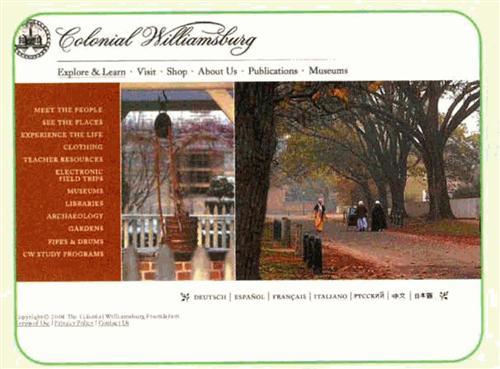
Colonial Williamsburg
<www.colonialwilliamsburg.org>
This site’s detailed descriptions of everyday 18th-century life — from gardening practices and holiday traditions to manners and politics — will breathe life into your Colonial ancestors. Click on Explore & Learn to get the facts on Williamsburg’s famous residents, tradesmen, children and slaves. If your ancestors actually lived in Williamsburg, follow the See the Places link to view drawings of buildings your family probably frequented. Don’t miss the Of Note column (you’ll find it at the right side of the Explore & Learn pages), which links to a Colonial dateline and historical glossary. The Publications link takes you to an online version of the Colonial Williamsburg journal; recent issues have covered Colonial dress codes, tavern music and crime and punishment.
ADVERTISEMENT
Old Salem
In 1753, a community of German-speaking Moravians migrated from Bethlehem, Pa., to North Carolina, where they built four towns — Salem being the central commercial and religious center. Click on About, then History of Old Salem to read about the Moravians’ migration and life in this early American town. Click on A Year in Salem to learn how your North Carolina ancestors passed each season. This site also has information on African-Americans in Salem and the restored buildings’ architecture.
Old Sturbridge Village
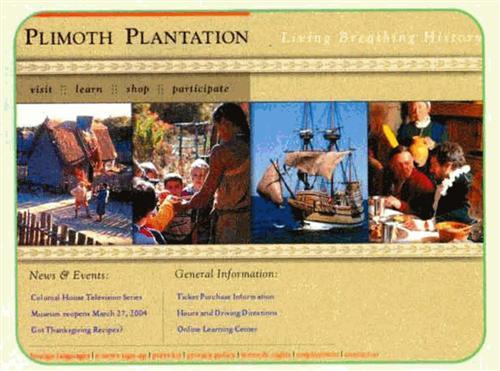
Plimoth Plantation
What was life really like in Plymouth colony? This living history museum aims to separate fact from fiction — and its Web site delivers. Click on Learn, then Historical Background to read up on the Pilgrims, Wampanoag Indians and the origins of Thanksgiving. Follow the Education Programs link, then click on Just for Kids and Just for Teachers to access a Pilgrim timeline, maps, recipes and riddles. If you have a speedy Internet connection, check out the interactive Investigating the First Thanksgiving feature (click on Learn, then Online Activities). You can get an excellent overview of period architecture by taking the virtual tour (click on Visit, then Virtual Tour) of the museum’s 1627 Pilgrim Village and Hobbamock’s (Wampanoag) Homesite. (You’ll need to download the free iPIX viewer offered on the site.)
Virtual Jamestown
<www.iath.virginia.edu/vcdh/jamestown>
Though still a work in progress, this site is a researcher’s dream. Here, you’ll find early 17th-century maps, a searchable database of more than 10,000 indentured-servant contracts, early Jamestown censuses and letters. Of particular interest is the searchable Christ’s Hospital Project database. Opened in 1552, Christ’s Hospital — a London school for orphans — sent many of its graduates to America as apprentices to merchants, ship captains and farmers. The project aims to track these apprentices; each record includes the child’s name, date admitted to Christ’s Hospital, town or parish from which the child was admitted, date of discharge and apprenticeship destination.
General American history
American Memory
The crème de la crème of American history sites, the Library of Congress’ American Memory has enough resources to keep a researcher busy for weeks. Among the online holdings are digitized maps, first-person narratives, photographs (many are public-domain), historical manuscripts, music, government documents and presidential portraits. The easiest way to locate a specific item is to do a global search across all collections (click Search on the home page). But if you do, you’ll miss digging down through one of the most amazing collections of Americana online.
From Revolution to Reconstruction: Documents
There’s nothing like reading period documents to understand the burning issues of your ancestors’ time. This digital library shelves transcriptions from the 13th-century Magna Carta to President George W. Bush’s 2001 inaugural address. Want to know the state of the nation in 1801? Read Jefferson’s address to Congress. Were your ancestors among the first settlers in the New World? Then be sure to read the Virginia charters or the 1629 Charter of Massachusetts Bay.
HistoryBuff.com
How did the news media depict major events in history? Thanks to Rick Brown, an avid newspaper collector, you can read the London Times‘ 1888 coverage of Jack the Ripper, The World‘s 1876 report on Gen. George Custer’s death, the New York Herald‘s 1868 article on Andrew Johnson’s impeachment acquittal, and other stories (under Primary Source Material). Click on History Library for Brown’s thoughts on the roles newspapers played in various historic events. His articles on “Newspapers of the American Old West,” for instance, follow the evolution of the press throughout the western United States.
Index of Native American History Resources on the Internet
<www.hanksville.org/NAresources/ndices/NAhistory.html>
Because American Indian history spans both time and space (a continent, in fact), you won’t find a single Web site that details the history of every tribe. That’s why we chose this portal site, which is arranged by geographic location and links to detailed information on most major tribes. It also links to photographs, timelines and oral history collections.
An Outline of American History
<usinfo.state.gov/usa/infousa/facts/history/toc.htm>
Don’t know much about our nation’s past? Take a lesson from this online version of An Outline of American History, one of the US Information Agency’s oldest continuing publications. Organized by time period, the site includes thumbnail sketches of historic events and their causes. Beginning with the migration across the Bering Strait, the site offers readers a solid overview of every formative stage in the country’s history, up to the early 1990s.
Military history
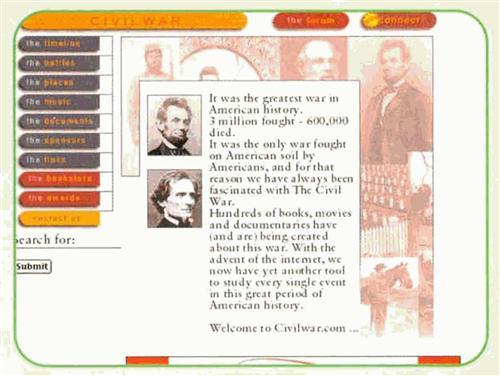
If you’re a little hazy about the battles, songs, places and documents that affected your Civil War ancestors, you’ll have a clearer view of their experiences after you visit this site. Click on The Battles to search by date or state for detailed descriptions of military engagements. Information includes the battle date, principal commanders, number of casualties, outcome and a blow-by-blow account. For a lighter look at wartime America, click on The Music to listen to favorite songs of the North and South. Be sure to peruse The Documents for official reports, letters and diaries.
HyperWar: World War II
What this site lacks in looks, it makes up for in content. World War II vets and their descendants can read through a huge collection of public-domain documents, including official reports, diaries, battle orders, diplomatic messages, logs and manuals. You’ll find interesting first-person accounts of operations in both the European and Pacific theaters. Although the texts aren’t searchable, they’re well-organized by subject for easy browsing.
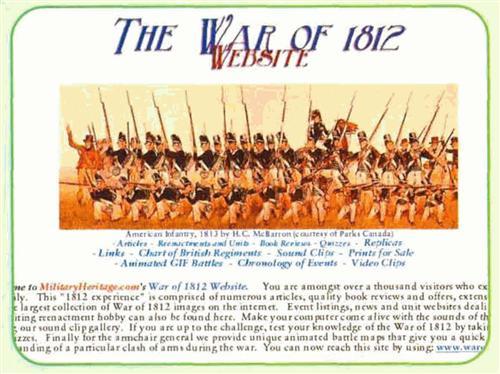
The War of 1812 Web site
<www.militaryheritage.com/1812.htm>
This Canadian multimedia site brings to life one of America’s “forgotten wars.” Read articles about everyday life in the British army, its battles, uniforms and arms. Click on Chan of British Regiments to learn which regiments fought where and when; a dandy chart shows regimental uniform colors. Video and audio clips contain period songs, as well as highlights from the Canadian Broadcasting Corp. documentary Canada: A People’s History.
American expansion
The Oregon Trail
<www.isu.edu/-trinmich/oregontrail.html>
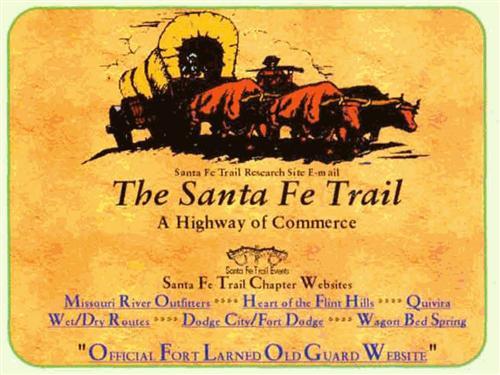
Santa Fe Trail Research Site
<www.stjohnks.net/santafetrail>
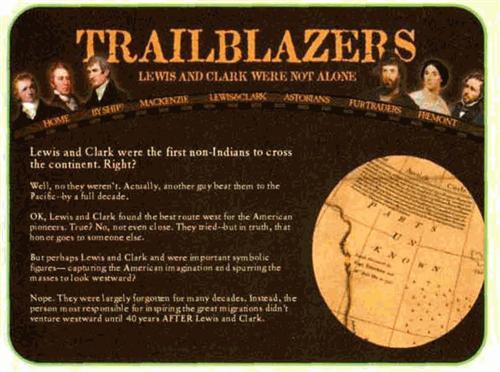
Trailblazers: Lewis and Clark Were Not Alone
This fun multimedia site introduces the names and faces of the men who explored North America after the Revolutionary War. Here, you’ll read about Alexander Mackenzie, a Welsh-born immigrant who aimed to be the first man to travel overland to the Pacific. Discover the story of “mountain man” John Colter, who explored much of the wilderness on his own and was probably the first white man to view the Yellowstone geysers. Don’t miss the Map icon at the bottom of each page; it shows various trailblazers’ exploration routes.
World history
Eastern European Information
<www.geocities.com/Heartland/Estates/6587/Eeuro.html>
This portal site links to dozens of resources relevant to Eastern European history and genealogy — from Catholic Parishes of Poland to German Migration to Austro-Hungarian Crownlands. Among the links are personal home pages, some of which contain photos of Eastern European villages. This might just be the greatest jumping-off point for your Eastern European research.
Electric Scotland
With more than 10,000 Web pages on Scottish history, clans, battles and culture, this site offers plenty to explore. You can’t search the texts, but they’re well-organized in categories such as Scottish Heritage, Knights Templar, Scottish Regiments, Castles of Scotland and Social History of the Highlands (follow the History link located at the top of the home page). Once you’ve culled the history, explore the Scottish Trivia, Lifestyle and Genealogy links.
Encyclopaedia of British History: 1500-1980
<www.spartacus.schoolnet.co.uk/industry.html>
This huge searchable collection offers particularly strong coverage of England’s royalty, town and city histories, religion and industry. Although it’s a bit top-heavy in advertisements, there’s real meat here — just click on any of the main links to go to pages with hundreds more links, each leading to articles, historical documents or biographies. This is a great resource when you want to do a quick lookup of a specific period in British history.
EuroDocs: Primary Historical Documents from Western Europe
<library.byu.edu/~rdh/eurodocs>
Looking for sources that shed light on key events in European history? You’ll find them here. Most transcriptions come from primary documents — a real boon for genealogists. Some records appear in their native tongues, but many have been translated into English. Materials span ancient to modern times. For example, you’ll find among the UK records a link to the transcribed Vindolanda tablets, first-and second-century wooden tablets from a Roman outpost in northern England.
Internet East Asian History Sourcebook
<www.fordham.edu/halsall/eastasia/eastasiasbook.html>
Sponsored by Fordham University, this portal site links to articles on Asian cultural origins, religious traditions, and ancient and modern history. Even if you lack family tics to the Fat East, visit this site to learn about events that affected politics and culture where your kin lived. Don’t miss the goodies stashed at the bottom of the page, including links to maps and a chronology of Chinese history.
Ireland’s History in Maps
<www.rootsweb.com/~irlkik/ihm/iremaps.htm>
Don’t let this site’s title mislead you — there’s far more than historical cartography here (although that’s well worth the visit). Scroll down past the map links, and you’ll discover articles on Irish history, geography, castles, surnames and legends. As you trace your Irish roots through the centuries, the maps will illustrate population growth, invasions, plantations, counties and areas with prominent Irish and English surnames.
Online Resources for Canadian Heritage
<www.civilization.ca/orch/www00_e.html>
This well-organized Canadian Museum of Civilization site links to information about Canada’s archaeology, ethnology, history and folklore. You’ll find dozens of articles on Canada’s indigenous peoples, ethnic groups, cultural traditions, military history and town and province history.
Timelines
Encyclopedia Smithsonian: American History Timeline
<www.si.edu/resource/faq/nmah/timeline.htm>
More than mere dates, this Smithsonian Institution timeline includes articles describing each period in US history, from the Vikings’ exploration of North America to the 1970s energy crisis. Be sure to peruse the articles and exhibits under the heading A New Nation: Exploration and Expansion (1783-1860), since many of our ancestors were on the move at this time.
National Museum of American History: Timeline
<americanhistory.si.edu/timeline>
This site goes hand in hand with the previous one. You can explore eras in US history by learning about objects specific to the times. For example, click on the 1789 Revolutionary War figure, and you’ll go to a Web page displaying George Washington’s sword, tent, mess chest and uniform. The 1877 contraption (guess what it is before you click!) links to a page about Thomas Edison’s inventions.
OurTimeLines.com
Find out what historic events happened in your ancestor’s lifetime with this interactive timeline. Click on Timeline; enter your ancestor’s name and birth and death years; then press the Generate Timeline button. The site will create a chronology of that time period’s milestones, with events color-coded by type (such as Technology Event or Disaster). You can even add your own events. To generate a printer-friendly version, check the Printable box.
Timeline for Middle Eastern and European History
<faculty.juniata.edu/tuten/ islamic/timeline.html>
For a quick overview of major events in Europe and the Middle East, look to this timeline hosted by Juniata College. Spanning 1200 BC to 1994, its helps you put US events in a world context. For example, just after the Revolutionary War, Tehran became Iran’s capital. Midway through Lincoln’s presidency’, Russia opened its first oil refinery.
Social history
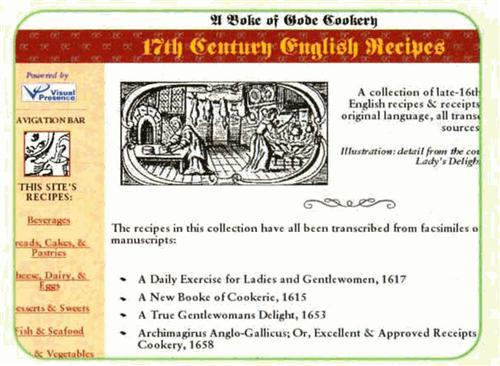
If you’ve ever considered treating your family to the same fare your ancestors enjoyed, be prepared for some heavy-duty head scratching — unless, of course, you recognize ingredients such as manchets, limbecks and wild-draggons. Transcribed from original sources, these recipes will test your ability to decipher late 16th-and early 17th-century language. (Before you throw in the dishtowel, try the decoding strategies in the April 2004 Family Tree Magazine.)
A Brief History of Hairstyles
<www.erasofelegance.com/hairstyles.html>
Click over to this site for an overview of men’s and women’s hairstyles throughout history — from ancient Greek times through the Edwardian era (think Rose in Titanic). The photos and descriptions will give you an idea of how your forebears looked. For instance, if your female ancestors lived in England during Shakespeare’s time, there’s a good chance they dyed their hair red to look like Elizabeth I.
Colonial Occupations
<homepages.rootsweb.com/~sam/occupation.html>
Don’t know the difference between a hoggard and a tinctor? Your Colonial ancestor did! Scroll through this list to discover old-time occupations. (Hint: Hoggards dealt with some pretty porky animals, and some people would dye to be tinctors.)
Feeding America: The Historic American Cookbook Project
<digital.lib.rnsu.edu/cookbooks>
The Michigan State University library and the MSU Museum have put together a searchable collection of the most influential cookbooks of the 19th and 20th centuries. Scan images of the 57 cookbooks’ pages or read transcriptions of recipes, looking for a specific comfort food or household remedy? You can search the collection by author’s name, title or ingredient.
Fiddle Tunes from the American Revolution
<www.halcyondaysmusic.com/colonialmusic>
Get ready to tap your toes when you click over to this site, which contains 54 tunes mentioned in the notebook of Capt. George Bush, an officer in George Washington’s army. Songs are arranged by type: marches, minuets, airs, country dances and song tunes. To hear a song, click on its title — anil pretend you’re enjoying a flagon of cider as the fiddler plays on.
From Quackery to Bacteriology: The Emergence of Modern Medicine in 19th-century America
<www.cl.utoledo.edu/canaday/quackery/quack-index.html>
This series of essays from the University of Toledo offers the 21st-century patient a fascinating (and often chilling) glimpse at the treatments our ancestors suffered, including Castile soap suds as a cure for ovarian cancer and bleeding for cholera. Read “Medicine in the Civil War” to get a dose of the horrific options your wounded ancestors probably faced.
Making of America
<www.hti.umich.edu/m/moagrp>, <library5.library.comell.edu/moa>
This project is a joint effort of the University of Michigan and Cornell University. The sister sites’ huge searchable collections represent the digitization of 8,750 books and 150,000 journal articles — primarily in the fields of education, science and technology, sociology history, religion and psychology — publishei in the 19th century. Use a basic or advanced search to locate texts reflecting the attitude and beliefs of your not-so-distant ancestors You can view the book or journal pages in small, normal or large print, and as text or images (including PDF versions).
Old Disease Names
<www.homeoint.org/cazalet/oldnames.htm>
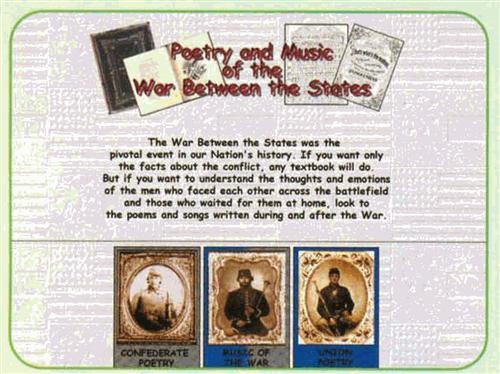
Poetry and Music of the War Between the States
<home.earthlink.net/~poetry61-65>
This collection includes enough heart-rending tunes and sorrowful verse to give you insight into the true horrors of a brother-against-brother war. “A Cry From Andersonville Prison,” written by a soldier with the 35th New Jersey Volunteers, asks the nation, “Oh ye who yet can save us … will you leave us here to die?” Not surprisingly, Robert E. Lee was the subject of many poems, including one by Julia Ward Howe, author of “The Battle Hymn of the Republic.”
From the June 2004 Family Tree Magazine.
ADVERTISEMENT

